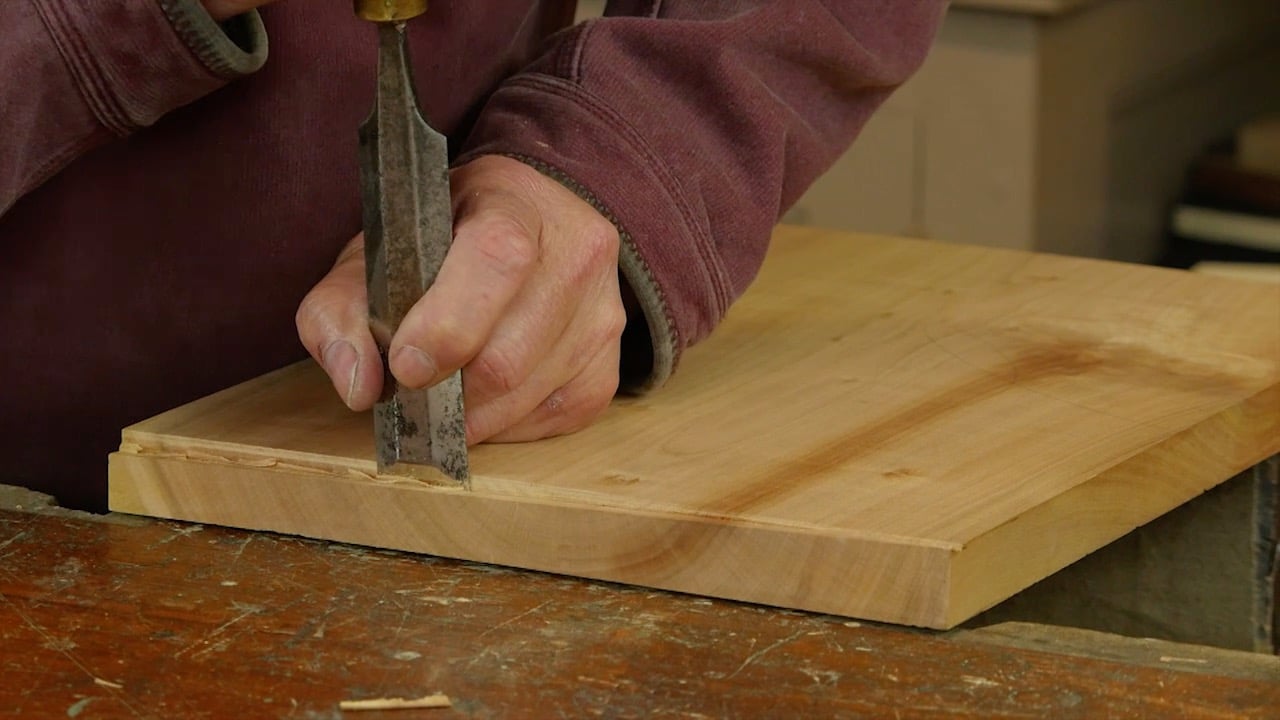Shaker Stool – Episode 2
Posted 15 July 2015
This is an episode in a paid series. Want to watch it? You just need to sign up as a paid member, and you can enjoy this video and many other videos we think you will love.
With the recess cut, Paul cuts the dovetail on the end of the upright stanchion. He shows the techniques used to ensure the angle and slope correspond with those of the recess.


Thank you for the demonstration.
Is it just me or does the volume seem to be very low on this one?
Hello Sandy, we are looking into the lower volume situation and will see what we can do about it.
Kind Regards, Phil
What a challenging project I will be trying to find a need for this stool in my shop or home just so I can build it. Simple, high precision joints that will challenge your skills to the limit. A single dovetail that itakes Paul 30 minutes to perform will take me several hours to get right.
Clearly, this is one of those joints for which you must remember to do your surface smoothing before the joinery and be essentially ready for finish application except maybe a light scuff with sandpaper, otherwise, you may ruin your joint fitting when you prep for finishing.
This joint seemed a little too gappy. At the very end when Paul assembled it, there was a noticeable gap along the joint farthest from the camera. I only wish Paul would acknowledge the problem and discuss what went wrong and how to avoid it.
Agree with Marty. I enjoyed the videos, but a little surprised that Paul decided to accept the obvious imperfections at the end, and to brush over them. Not the “crisp shoulders” which we’ve come to expect (“accuracy, from ‘curare’, to care” or something along those lines…).
I’ve had similar results with slightly cupped boards, and suspect that imperfect stock preparation may be the explanation. But maybe this is normal, even inevitable, and not a problem? No idea: would like to hear the teacher’s explanation. (Not a criticism, nor or a complaint, just a comment!)
Marty,charles,
It’s a test.
Step one : Identify the problem correctly. How did this happen and why.
Step two: How would YOU fix the “imperfection”?
I have some thoughts, but since ya’ll brought it up I’d like to hear what you think. 🙂
Best,
Craig
We don’t get much interaction from Paul in these comments so I’m not hopeful that we will get any feedback. I believe Paul films these episodes far in advance but unfortunately doesn’t (mostly) address questions that are raised here. It’s my only disappointment with the subscription service he offers.
Assuming that Paul’s design is good I can only conclude that poor execution caused the gap. A good design should accommodate, within reason, warped stock. It’s all conjecture.
I wouldn’t mind treating this as a ‘test’ as you say, if there was a final answer from the teacher.
I can see what you guys mean at the end of that video. He gives it a couple of taps and it closes part of the way but he doesn’t tap it all the way tight.
These are large joints and they take a little bit of work to get them fully seated. While that joint isn’t super-tight it does seat fully down. We weren’t trying to hide a gappy joint, this joint is completely acceptable. Just not fully seated in that shot.
We have taken a look at the finished project and there aren’t any gaps on that joint. There also wasn’t further work to make that joint fit (just a couple of extra hammer taps).
Thank you Paul and Joseph for what you do. I remember how long I used to spend trying to set up my router table and jigs to attempt such a joint only to be disappointed that it would be lose or just not worth all the trouble. Now I can listen to my music and actually enjoy the outcome and the process.
Thanks
Wonderful videography and instruction. Considering the complex angles, I think there must be a structural reason for this sliding dovetail joint’s angled joints that would be an improvement over 90-degree angled tenons and mortises. But I am uncertain about this. Does anyone know for certain? Thanks.
Hi Paul.
Great lesson but I can barely hear you.
Paul, would you ever use a bullnose plane to tidy up the 7 ͦ edge of the dovetail at all?
I asked Paul and he said:
No. I think the important thing is to remember is the whole of the matching bevel doesn’t have to be a matching correspondence. The important bit is that the dovetail tightens at the end of assembly.